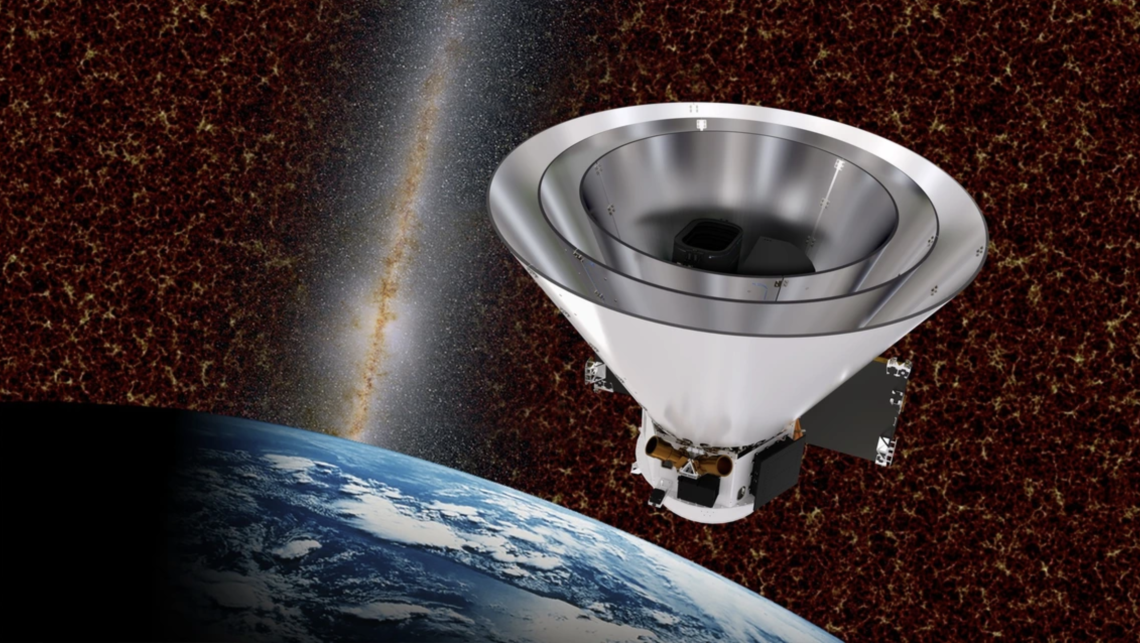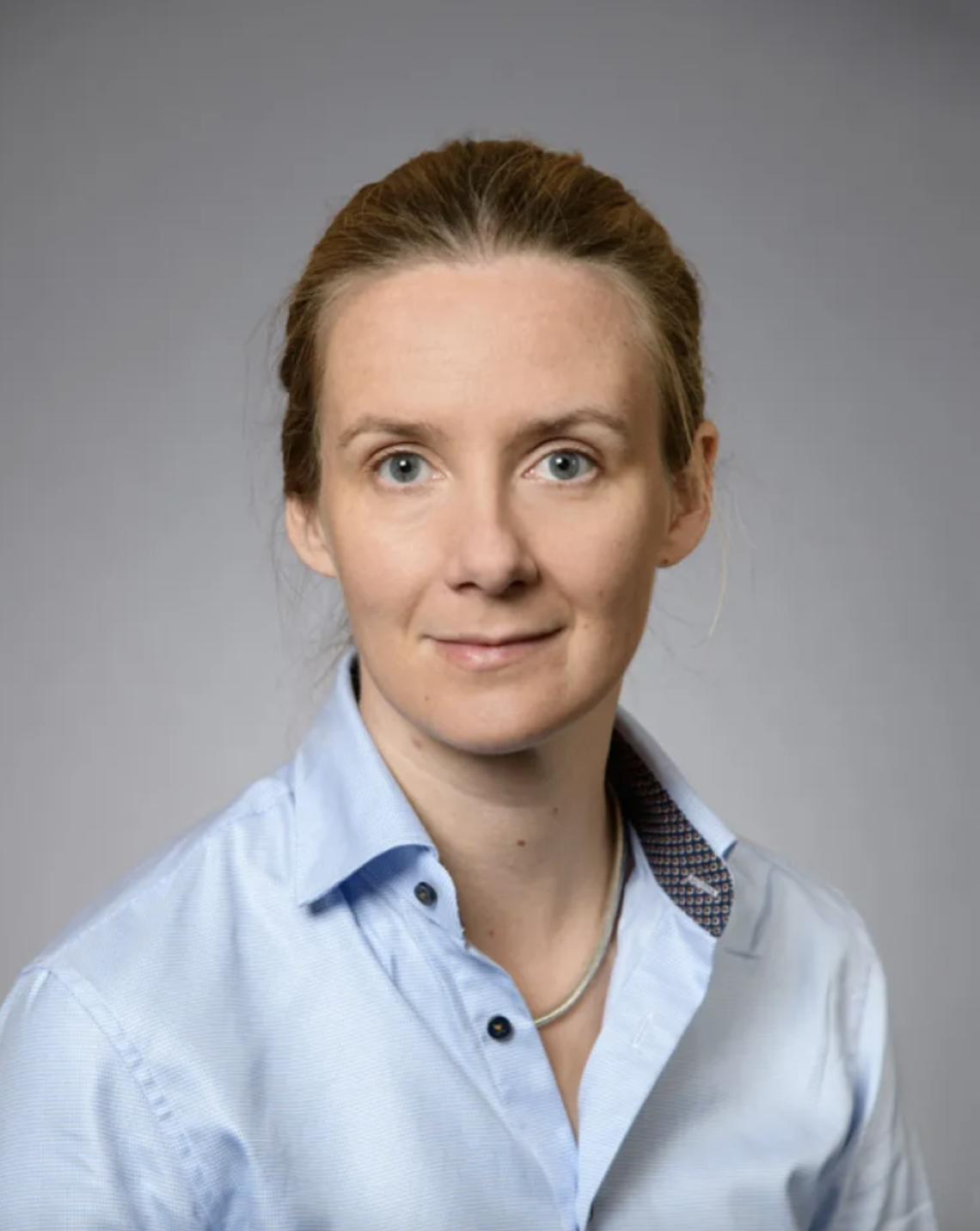NASA's SPHEREx mission will use software from the Arizona Cosmology Lab to answer questions about the first moments after the Big Bang

By creating the largest 3D map of galaxies that has ever existed, SPHEREx will help scientists answer big-picture questions about why the large-scale structure of the universe looks the way it does today, how galaxies form and evolve and the abundance of water and other key ingredients for life in the Milky Way galaxy.
NASA/JPL-Caltech
Read (or listen to!) the article on University of Arizona News
On Tuesday, NASA launched a new space telescope into orbit to explore the origins of the universe. The mission will use sophisticated software, developed at the Arizona Cosmology Lab at the University of Arizona, to analyze data and help astronomers understand what happened in the first trillionth of a second after the Big Bang.
SPHEREx – which stands for Spectro-Photometer for the History of the Universe, Epoch of Reionization and Ices Explorer – is a NASA mission that will use a wide-field telescope to gather optical and infrared data on more than 450 million galaxies, as well as more than 100 million stars in the Milky Way, over the course of two years. The U of A is a mission partner, along with the California Institute of Technology, the Jet Propulsion Laboratory, Ball Aerospace, and the Korea Astronomy and Space Science Institute, among others.
The mission has three goals. Within the Milky Way, it will search for signs of water ice – a major ingredient in the search for life beyond Earth. It will probe the origin and history of galaxies using a fairly new technique called intensity mapping. And it will explore the deep early history of the universe itself.
SPHEREx researchers are interested in understanding what happened during the inflationary epoch, when the universe expanded exponentially in the first fraction of a second after its birth. In the moment of inflation, tiny quantum fluctuations — little irregularities — were blown up through rapid expansion.
These were the seeds in the early universe that eventually gave rise to galaxy formation. The precise infrared capabilities of SPHEREx will allow the mission to measure the distribution of galaxies in order to understand the nuances behind this inflationary process.
Researchers at the Arizona Cosmology Lab are also interested in what can't be seen. Galaxies trace the presence of dark matter, which is thought to have played a role in the formation of galaxies and the evolution of the universe.
"We're looking for tracers," said Tim Eifler, an associate professor of astronomy at the U of A Steward Observatory. "Galaxies trace the presence of dark matter. Where there are a lot of galaxies, there is likely a lot of dark matter because of gravity."
SPHEREx is unique in that it will measure the whole sky multiple times during its two-year mission.
"We hope to see the imprints of the very early universe by making the largest 3D map of galaxies that has ever existed," said Elisabeth Krause, an associate professor of astronomy and physics who leads the U of A team for the mission.

Associate professor of astronomy Elisabeth Krause leads the U of A team for the SPHEREx mission.
Using galaxy distribution to deduct what happened in those early microseconds of the universe is a sophisticated science: depending on which theoretical model the Cosmology Lab uses, the connection between dark matter and luminous matter could be different.
The SPHEREx map will amount to millions upon millions of stars and galaxies; plugging these all into to a model would be impossible. Instead, Krause and her team at the Cosmology Lab are condensing the catalog of galaxies into a few summary statistics—an extraordinarily fine-tuned process that largely involves counting pairs of galaxies as a function of their separation from each other.
The smaller the space between the galaxy pairs, the harder the math is. For the mission, former U of A postdoc Yosuke Kobayashi developed a complex mathematical model to pinpoint relevant information about galaxies and discard unnecessary information. In order to develop the model, Kobayashi said “I learned a lot about the detailed techniques of perturbation theory of large-scale structure, and how to make flexible implementations of them. I hope my code will contribute to constraining cosmology and primordial non-Gaussianity (PNG) with unprecedented precision.”
Kobayashi’s equations are massive. To make use of these sophisticated mathematical descriptions for SPHEREx, the Cosmology Lab needed to be able to put the equations into code and to develop software capable of analyzing data and building accurate models of the universe. The more complex the equations, the slower they are to compute, and the Cosmology Lab has turned to machine learning to accelerate their software. Computational speed has always been a bottleneck when predicting what we see in the universe,” said Eifler. “We’re training a neural network with some of these equations, and when we later run the analysis, it will be much, much faster.”
Cutting-edge computation work like this is daily bread for the Cosmology Lab, which has been called on for a long lineup of recent astronomy missions. The state-of-the-art U of A high performance computing system has been of immense help in securing these contracts. It has also been a draw for recruiting talented students, who receive unique training in the Cosmology Lab’s interdisciplinary methods, which require strength in both data analysis and astronomy. Cosmology Lab students leading aspects of the SPHEREx project include U of A grad students Joe Adamo and Annie Moore, who are working on cosmological inference and inflation modeling, respectively, as well as undergrad Grace Gibbins, who is contributing to the machine learning aspect of the project. “I am constantly learning something new,” said Gibbins of her experience working on SPHEREx, “everything from mathematical models of inflation to the inner workings of neural networks and MCMC analysis.”
“I have really enjoyed working with this collaboration,” said Moore. “I have learned a lot from the many scientists involved and am excited to have worked on a project studying such impactful science.”
“One thing I've learned from being in SPHEREx is the benefits of positive collaboration,” said Adamo. “We work closely with many people at Caltech, and in doing so I have been able to expand my knowledge of cosmology and software development, while also working with an incredibly kind and welcoming group of people. At the same time, I have been able to make my mark on a groundbreaking mission in a way I could not do were I researching by myself, showing that when doing cosmology, it's better together!”
Now that SPHEREx is in orbit, the next chapter of work at the Cosmology Lab will begin: taking the vast catalogue of data and beginning to constrain cosmological models that will help unveil what happened at the dawn of time. “There will be a lot of sleepless nights,” Eifler said. He and Krause suspect that more rich chapters lie ahead for the Cosmology Lab. As more high-tech telescopes launch in the coming decade (beginning with the Nancy Grace Roman Telescope in 2027), there will be an influx of ever-more-precise data, and demand for the scientists who can analyze it.
“The floodgates have opened,” Eifler said. “And with that, there's an enormous possibility for discovery and for the people who are at the forefront of interpretation.”

